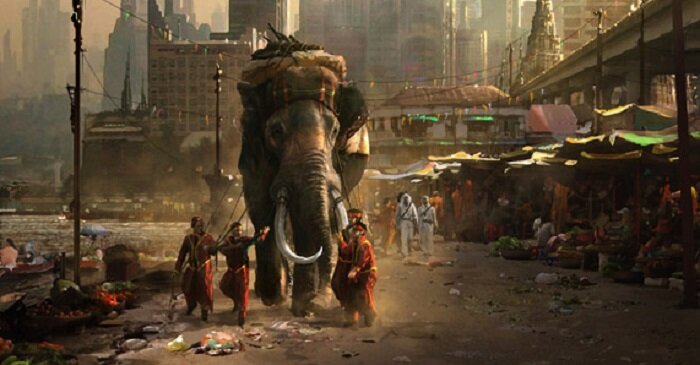
I don't normally review books that I haven't finished, and I rarely review books that I didn't like. I reckon people don't need to hear about books they shouldn't read; recommendations are much more fun.
But I have to make an exception for Paolo Bacigalupi's The Windup Girl. I almost never stop reading a book once I've started. I think the last one was Breaking Dawn. But, like with the fourth Twilight book, I was just so disgusted with the themes of The Windup Girl that I had to put it aside for my own sanity and blood pressure levels.
The Windup Girl won both the Hugo and Nebula awards for best novel, which is kind of a big deal. But the fact that this book has got the entire sci-fi community behind it only confirms to me that science fiction is a massive boys' club, where the treatment of female characters is secondary to pretty much anything else.
Despite having many POV characters, the Windup Girl has only one prominent female character, the titular Windup Girl Emiko. She is, to put it bluntly, a sexbot, engineered by scientists to be pleasing to her male owners, from her impractically small pores that lead her to overheat if she doesn't eat ice to her compulsion to follow everyone's instructions, even when she desperately does not want to. Emiko has human dignity, human emotions, feels fear and pain. And the first time we see her, we are treated to a graphic group rape scene, which is so detailed that it seems almost voyeuristic in nature.
Emiko is also the only Japanese character in the book. The entire series seems built around a concept of "exotic Asia," with random Malaysian, Japanese and Chinese words thrown into the prose, and Emiko is the worst example. She is a revolution in both technology and subservience, enjoyed by men in the book as a curious foreign toy. She speaks in somewhat broken English, and is, in short, the walking, talking embodiment of perverse stereotypical fantasies of Japanese women. Perhaps she grows as a character over the course of the book. Perhaps she gains her freedom. It's possible. But I will not be reading further to find out.
It's also possible, of course, that Bacigalupi is aware of all the problematic elements of Emiko's character. It's possible that he's using her to critique these elements of society, or to show how the collapse of society also leads to the horrific mistreatment of women. If that's the case, he seriously missed the mark. Emiko is as much of an object in the narrative as she is to the characters in the story. Like Emiko's "clients," who come to her even as they're horrified by her foreignness and semi-robotic nature, the narrative seems to revel in watching her pain and abuse, even as it acknowledges that it should really feel that way. It's perverse, and it's disturbing, and the fact that the book was so highly praised makes me incredibly suspicious of what science fiction critics value in their books in general.
Combine this with the fact that, in the 100 pages I read, the plot didn't seem to be going anywhere, and I couldn't connect with, like or understand any of the POV characters, and I really have to wonder why the book got so much praise.





























